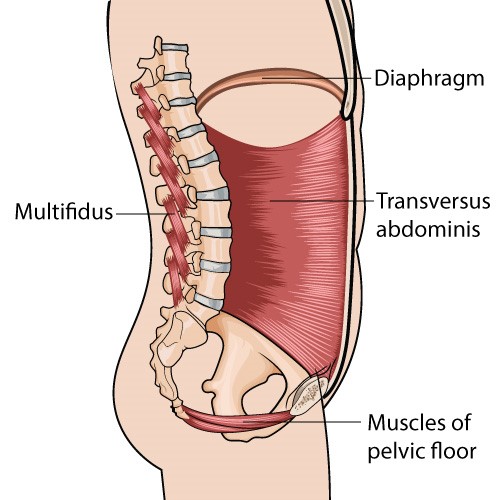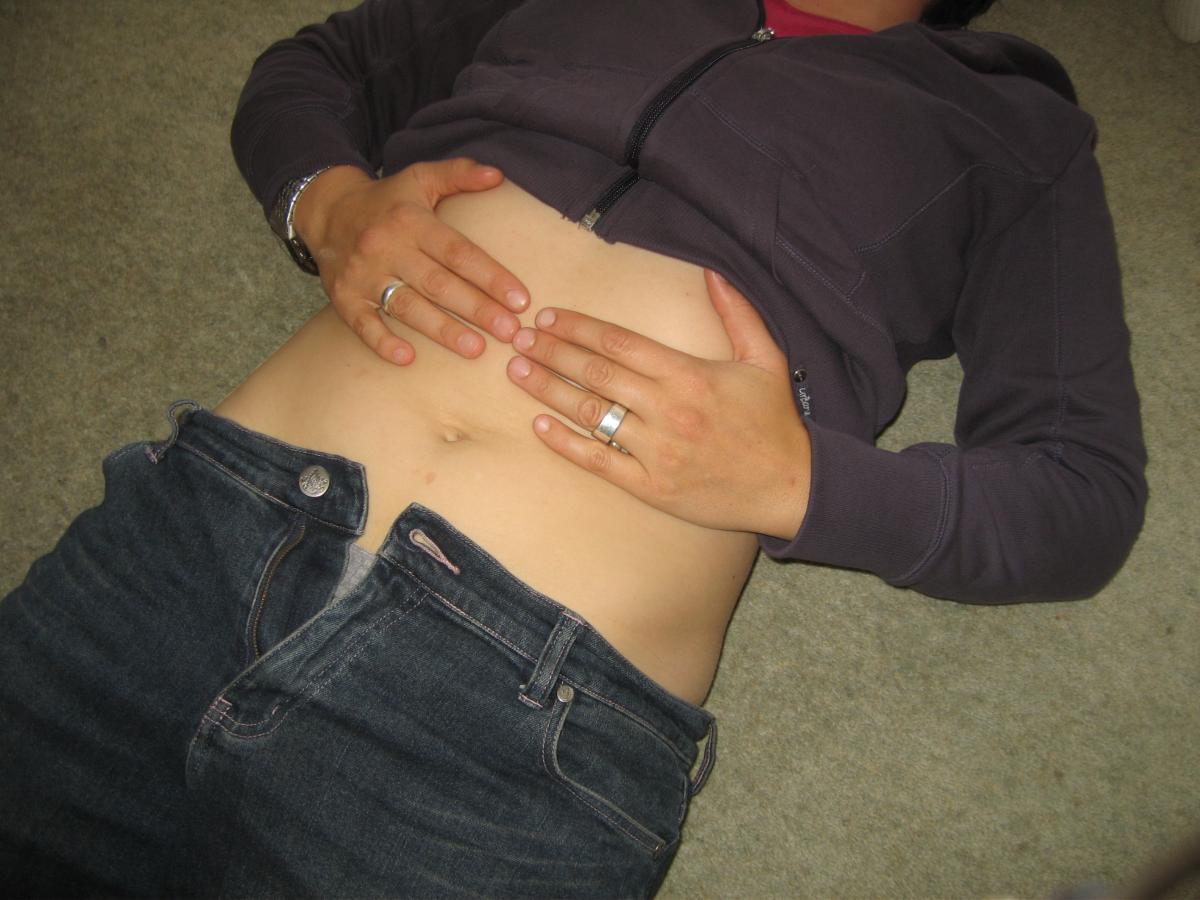Why is your Breathing important?

How To Do Umbrella Breathing
Positions
Technique
- expand ribs sideways and belly rise on the inward breath and then
-
return to rest on the outward breath (ribs and belly naturally deflate.)

As a general guide you could consider creating moments of this sort of quiet mindful breathing 4-5 x/day for 1-2 minutes, but feel free to fit it into what works best for you (ie less/more often, a few breaths or up to 10 minutes).
How to use Umbrella Breathing in Everyday Life
Practice this for a few minutes before commencing your home exercise program or practice for longer using the the audio track above.
Continue Umbrella Breathing as you practice your pelvic floor or rehabilitation exercises and go about your daily life.
You will learn to recognise and create a relaxed state.
This will help you respond calmly to stressful body sensations and thoughts.
Pelvic Floor, Posture and Prolapse
Through practice you can permanently change inefficient posture patterns which are thought to affect your pelvic floor.
A tightened and shortened pelvic floor is associated with pelvic pain, sexual pain, bladder and bowel emptying problems and bladder and bowel urgency.
An overwhelmed pelvic floor is associated with pelvic organ prolapse and bladder and bowel leakage due to greater downward pressures. When you use umbrella breathing more throughout the day it is likely to spread the pressure of breathing throughout the chest and abdomen better.
Bladder and Bowel Control
If you experience an urgent need to urinate or empty your bowels you can use this breathing to calm the body sensations.
Remain still, relax your abdominal muscles and breath to reduce your urge and immediately do a moderate to strong pelvic floor contraction.
Pain
If you experience pain and the unhelpful thoughts about pain, you can use this breathing to calm the body sensations.
Remain still, relax your abdominal muscles and shift your attention to your breath again and again.
You can use this breathing whilst doing myofascial release on trigger points on your abdominal, your pelvic floor or any other muscles.
Anxiety
If you experience anxiety and unhelpful thoughts, some people find this breathing helps calm the body and mind.
Remain still, relax your abdominal muscles and shift your attention to your breath again and again.
Bladder emptying
It is important that you maintain quiet breathing when you empty your bladder.
This will prevent you from ‘bearing down'.
'Bearing down' or straining is associated with problems such as incomplete bladder emptying and pelvic organ prolapse.
Bowel emptying
This breathing technique is helpful when emptying your bowel. Your therapist may suggest a "moo to poo" strategy that builds on the skill of umbrella breathing.
